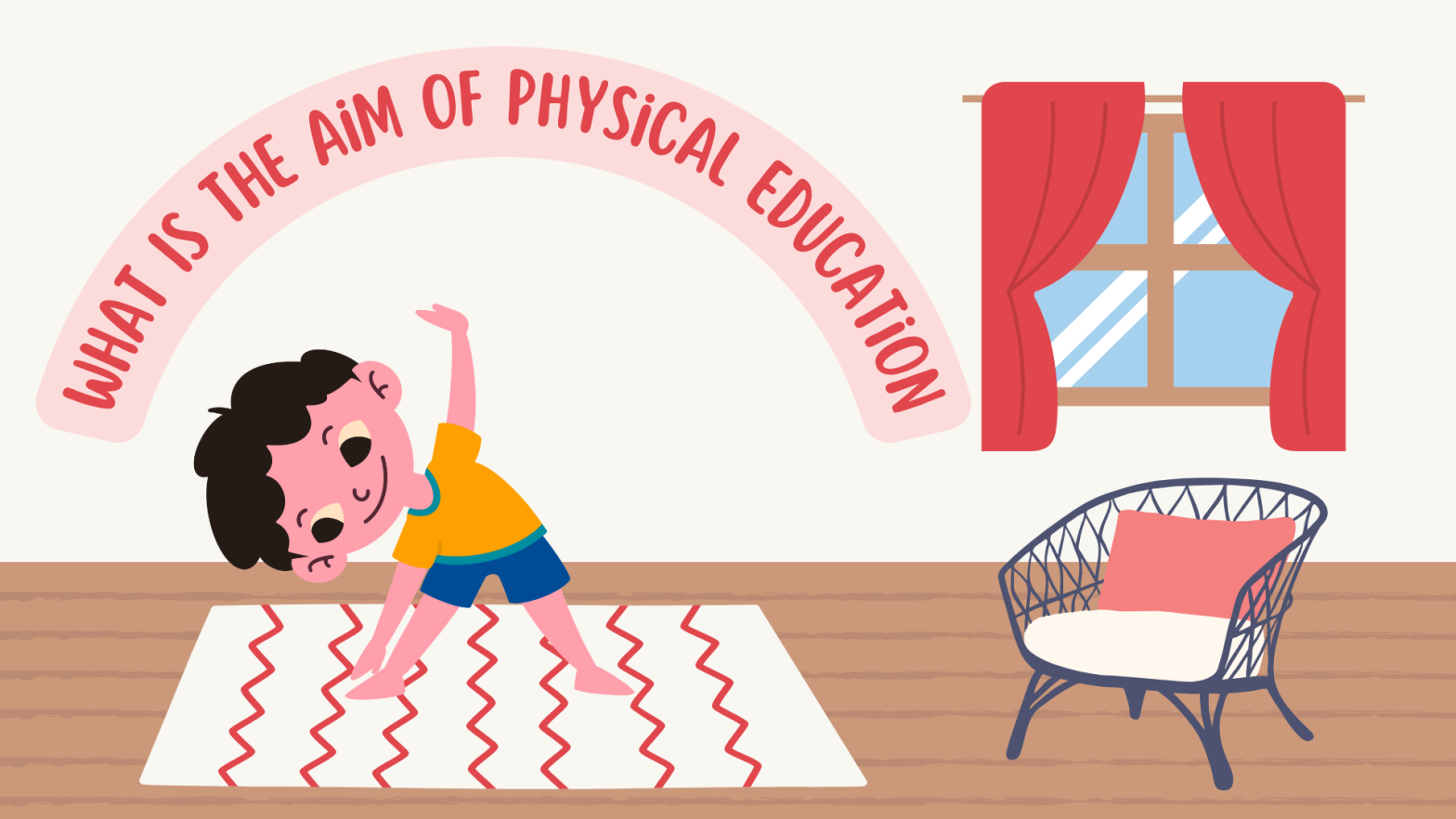
Have you ever wondered why the school syllabus includes physical education? Why are students encouraged to play games, exercise, or even learn about nutrition and healthy living? What is the aim of physical education?
The lessons imparted to students during PE classes are not just about playing sports, they have a much deeper purpose that leaves a lasting impression in their lives. It is to help them grow into healthy, disciplined, and confident individuals who value fitness, teamwork, and overall well-being.
If you want to know the purpose of physical education in detail, you are in the right place. This article will not only answer your question but also help you understand the importance and impact of physical education on students’ overall growth.
The main aim of physical education is to prepare a physically, mentally, and emotionally fit generation.
By encouraging mental and physical fitness, health awareness, motor and cognitive skill development, teamwork and socialization skills, discipline, and personal growth, PE aims at carving out well-rounded individuals of tomorrow.
Physical education is an essential part of every school curriculum. It is not limited to exercising or playing sports, but covers a wide range of activities that help students maintain good health, learn teamwork, develop discipline, and build confidence.
It also teaches essential life skills such as time management, perseverance, and respect for rules, all of which are crucial beyond the classroom. Listed below are the aims and objectives of physical education:
The primary aim of physical education is to promote physical health and well-being. PE classes incorporate sports, gymnastics, yoga and exercise, swimming, dancing, and various other activities that enhance physical, mental, and emotional health and well-being. These activities keep students fit and make them strong enough to combat common health issues, such as childhood obesity.
According to a study, physical activity positively impacts mental health. It promotes better mood, sleep, and quality of life.
It reduces stress and anxiety, improves focus and academic performance, and boosts self-esteem.
Physical education in schools lays the foundation of a positive state of mind and optimal mental and emotional health.
Motor skills develop from infancy to childhood, and engaging in physical activities helps improve these skills. One of the most significant aims of physical education in schools is encouraging the development of motor skills and coordination.
From fine to gross motor skills, including stability skills (such as balancing, bending, and twisting), locomotor skills (like jumping and running), and object control skills (like kicking, catching, and throwing), physical education teaches fundamental skills to young students. With physical education, they become more agile, confident, and competent.
Physical education is more than a subject taught at schools. It helps in developing motor skills and coordination, enhances strength and durability, boosts brain function, muscle and bone health, flexibility, memory, focus, self-control, resilience, confidence, and self-esteem.
All these attributes render students on the path of physical, mental, emotional, and personal growth, and help them navigate life and deal with its challenges in the best possible way.
Physical education makes students adaptable and inclusive. When students interact with different types of learners, they mold themselves according to the requirements of their team and teammates. Moreover, peer-assisted learning brings them closer to their teammates. They develop empathy, respect, and inclusivity.
Physical education classes bring students together. When they participate in team sports or group activities, they learn to thrive in a social and collaborative environment. They communicate, understand roles and responsibilities, and cultivate leadership skills. Collaboration also helps in the development of conflict resolution skills. Furthermore, when students share a playground with students from different cultural backgrounds, they learn to accommodate diversity.
Another aim of physical education is to teach students discipline and work ethic.
Physical education puts students through rigorous training and drill sessions that don’t just make them physically strong, but also strengthen their overall character. They learn to value time and develop a sense of responsibility by showing up punctually for practice. Balancing physical activity with academics improves their time management skills. They grow more disciplined over time. Furthermore, regular physical activities make them more persistent.
Physical education teaches self-management to students. When students take up any physical activity, they learn to monitor themselves. They set a goal, create a plan to achieve it, and persistently work towards it. They monitor their habits and time, and assess themselves. It makes them more responsible and consistent, and nurtures their goal-setting and self-regulation skills.
An active lifestyle stems from physical education. It makes students aware of their health and constructive habits. They learn about nutrition, the importance of rest and sleep, recovery, and other principles of health and an active lifestyle.
By making students more informed, PE classes aim to motivate students to lead an active lifestyle and adopt healthy habits.
Physical education classes help students explore a career in health and fitness. Students learn healthy habits, principles of nutrition, injury management, safety measures to adopt during sports and physical activities, and first aid.
It opens up many career prospects for them, including athletic training, coaching, physiotherapy, and fitness training, among others. PE classes is the stepping stone towards learning sports, which can also open career opportunities once excelled.
Physical education plays a vital role in shaping both the body and the mind. It encourages students to stay active, build healthy habits, and develop qualities that go beyond the playground.
Through regular practice, teamwork, and structured activities, students gain discipline, confidence, and resilience. In simple terms, physical education aims to shape well-rounded people who are strong both in body and character.